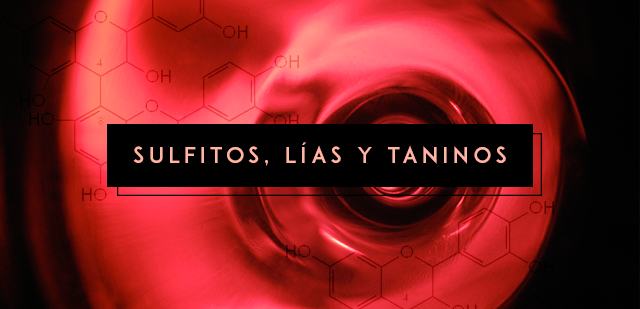ABOUT SULFITES, LEES AND TANNINS

The wine industry is full of terms and concepts that inspire confusion or at least curiosity. These words may seem pretentious or excessively attached to scientific nomenclature, but whether they're difficult to comprehend and use depends entirely on how this information is conveyed.
And that is precisely our goal: to shed light on commonly used terminology in the wine world, our culture and passion. It really is simple, you'll see.
Today we'll focus on three wine concepts that everyone has come across and which we feel are in need of a short and simple explanation: SULFITES, LEES AND TANNINS.
SULFITES: “Contains sulfites.” A lexical fixture on almost every wine label out there, and a fixation among people who are allergic or intolerant to sulfur (which is completely harmless to the rest of us mortals), but...what are sulfites exactly and what do they do?
Here we're talking about the addition of sulfur dioxide (SO2). Sounds like a synthetic chemical? Far from it. It’s worth mentioning that sulfites occur naturally in many foods (including wild asparagus and artichokes, both rich in sulfur), and they protect these products, as well as wine, from spoilage. It's nothing new either. Sulfites have been added by the food and agricultural industry (in making jams, bread, beer, etc.) for decades.
They have a preservative and antibacterial mission, and their use in the wine industry is based first and foremost on preventing quick oxidation and ensuring that the wine matures optimally while maintaining the intensity of its color and aroma.
LEES: Lees are nothing more than dead yeast cells leftover after fermentation (autolysis), which are normally discarded during a process known as settling and racking. Sounds gross, but it's actually delicious.
They give the wine (especially barrel-fermented whites) notes of brioche and bread, as well as protecting it from oxidation. Lushness and elegance. Complexity and body. Open a “Dobles Lías” Marimar Estate Chardonnay and let us know what you think!
TANNINS: The eternal tannins. These are colorless flavonoids (polyphenols with antioxidant properties) found in the skin of most fruit. Since they are present in the stems and skins of the grape, tannic notes will always characterize red wines.
In organoleptic terms, they're responsible for the dry, mouth-puckering and astringent sensations in a wine. They also enhance the body, aromatic intensity and color of red wines, although to a lesser extent than anthocyanins. (We'll talk about them in an upcoming post.)
Some varieties are more tannic than others. For example, Cabernet Sauvignon and Syrah both display impressive tannins, whereas Garnacha and Pinot Noir are more timid in this regard.
At times it is useful to differentiate between the “sweet or soft” tannins derived from the fruit and the “hard” tannins imparted by the bark used in making oak barrels.
Still have questions? If so, you know where to find us! Ask an expert
